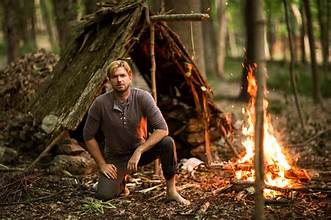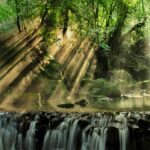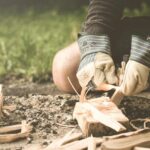In a world where the hustle and bustle of modern life often disconnects us from nature, ethical foraging emerges as a fascinating way to reconnect with our roots. Beyond the thrill of hunting for edible treasures, ethical foraging advocates for sustainability and respect for the environment. Let’s delve into the art of ethical foraging for edible plants and fungi, exploring the bounties nature has to offer.
Understanding Ethical Foraging
Respecting Nature’s Pantry
Ethical foraging goes beyond the mere act of picking plants and fungi; it’s a philosophy that emphasizes respect for the ecosystem. Before embarking on a foraging adventure, take the time to educate yourself about local flora, respecting the delicate balance of nature. This ensures that you not only enjoy the bounty but also contribute to the sustainability of these natural resources. Nature’s pantry beckons, offering a wealth of edible treasures to those who approach with reverence. In the delicate dance of ethical foraging, adherence to principles ensures not only a bountiful harvest but also the preservation of ecosystems. Let’s explore the essential principles that form the backbone of respectful foraging.
1. Educate Yourself
Before immersing yourself in the wild, arm yourself with knowledge. Learn to identify local flora, understand their ecological roles, and appreciate the intricate tapestry of nature. Education is the bedrock of ethical foraging, fostering a deep connection between forager and environment.
2. Know Your Ecosystem
Each ecosystem has its unique rhythm and dynamics. Whether it’s a dense forest or a coastal plain, understanding the intricacies of your surroundings enables you to navigate respectfully. Embrace the nuances of each ecosystem to forage in harmony with its natural flow.
3. Practice Leave-No-Trace
A mantra etched in the soul of ethical foragers is leaving no trace. Stay on designated paths, minimizing your impact on the environment. Avoid trampling delicate plants and disturbing wildlife, ensuring that your presence is a fleeting whisper in nature’s ear.
4. Be Mindful of Seasonality
Nature operates on a seasonal symphony. Respect the ebb and flow of plant life, harvesting only when abundance graces the landscape. By syncing your foraging activities with the natural calendar, you become a steward of sustainability, supporting the cyclical renewal of resources.
5. Befriend Local Experts
Forge connections with seasoned foragers and naturalists in your community. Their wealth of experience becomes a guiding light, offering insights into the local ecosystem’s secrets. Building these relationships enhances your foraging journey, fostering a sense of camaraderie with fellow stewards of nature.
6. Practice Responsible Harvesting
When gathering edible plants, adopt a mindset of responsibility. Take only what you need, leaving behind ample for regeneration. This mindful approach ensures that your foraging endeavors become a symbiotic dance with nature rather than an exploitative extraction.
7. Understand Plant Rarity
Some plants dance on the edge of rarity or face endangerment. Know the conservation status of local species, and refrain from harvesting those at risk. Ethical foraging extends beyond personal gain, embracing a commitment to the preservation of biodiversity.
8. Respect Private Property
Seek permission before venturing onto private land. Respect landowners’ boundaries, forging positive relationships within the community. This harmonious interaction ensures that ethical foraging becomes a shared endeavor, benefiting both foragers and land stewards.
9. Mindful Gathering
Engage all your senses as you traverse the natural landscape. Listen to the whispering wind, feel the texture of leaves beneath your fingertips, and observe the subtle hues of the environment. This mindful presence transforms foraging into a spiritual communion with the earth, enriching both body and soul.
10. Teach and Share
The essence of ethical foraging lies in communal learning. Share your knowledge with friends, family, and fellow foragers. By becoming a beacon of education, you contribute to a collective consciousness that values and preserves the delicate balance of nature.
Respecting nature’s pantry is not just a personal pursuit but a shared responsibility. Through education, mindfulness, and a commitment to sustainability, ethical foragers become stewards of a flourishing and interconnected world.
The Importance of Sustainable Harvesting
Sustainability is at the core of ethical foraging. Harvesting edible plants and fungi responsibly involves understanding their growth patterns, ensuring that you leave enough behind for regrowth. By adopting sustainable practices, foragers play a crucial role in preserving biodiversity and maintaining healthy ecosystems.
Identifying Edible Plants and Fungi
Knowing Your Greens
Delving into the world of edible plants, you’ll be amazed at the variety nature offers. From dandelion greens to wild garlic, identifying these nutritious treasures requires a keen eye and a bit of botanical knowledge. Take the time to familiarize yourself with the distinctive features of each plant, ensuring accurate identification.
Dandelion Greens
Dandelion greens, often dismissed as weeds, are a nutritional powerhouse. Rich in vitamins A and C, iron, and calcium, they add a vibrant burst to salads. When foraging for dandelion greens, choose young leaves for optimal tenderness and flavor.
Wild Garlic
Wild garlic, with its pungent aroma, adds a delightful twist to culinary creations. Identify it by its long, lance-shaped leaves and characteristic garlic scent. Ethical foraging for wild garlic involves mindful picking, ensuring the plant’s propagation for future harvests.
Fungi Feast
Venturing into the world of fungi requires an extra layer of caution. While the forest floor hides a plethora of edible mushrooms, it also conceals potential dangers. Arm yourself with knowledge about safe-to-eat varieties and the telltale signs of poisonous look-alikes.
Chanterelles
Chanterelles, with their distinctive golden color and fruity aroma, are prized by foragers. These delectable mushrooms thrive in both coniferous and deciduous forests. Remember, though, to leave some behind to ensure the continued growth of this precious fungus.
Morels
Morels, resembling tiny, honeycomb-like structures, are a gourmet delight. Forage for morels in the spring, and savor their earthy flavor in various culinary dishes. Ethical foraging involves leaving no trace and respecting the natural habitats of these elusive mushrooms.
Ethical Foraging Practices
Leave No Trace
The mantra of ethical foragers worldwide is to “leave no trace.” Whether you’re foraging in a local park or a dense forest, ensure you leave the environment as pristine as you found it. Avoid trampling on delicate plants, and resist the temptation to overharvest.
Contribute to Citizen Science
Ethical foraging isn’t just about personal enjoyment; it’s an opportunity to contribute to scientific knowledge. Many organizations encourage foragers to report their findings, aiding in the understanding of plant and fungi distribution. By becoming a citizen scientist, you play a vital role in preserving biodiversity.
Conclusion
Embarking on the journey of ethical foraging for edible plants and fungi is more than a culinary adventure; it’s a harmonious dance with nature. By respecting the environment, identifying edible treasures, and embracing sustainable practices, foragers can savor the bounty of the earth while ensuring its vitality for generations to come. So, don your foraging gear, step into the woods, and let the symphony of nature guide you towards a more sustainable and connected way of living.







